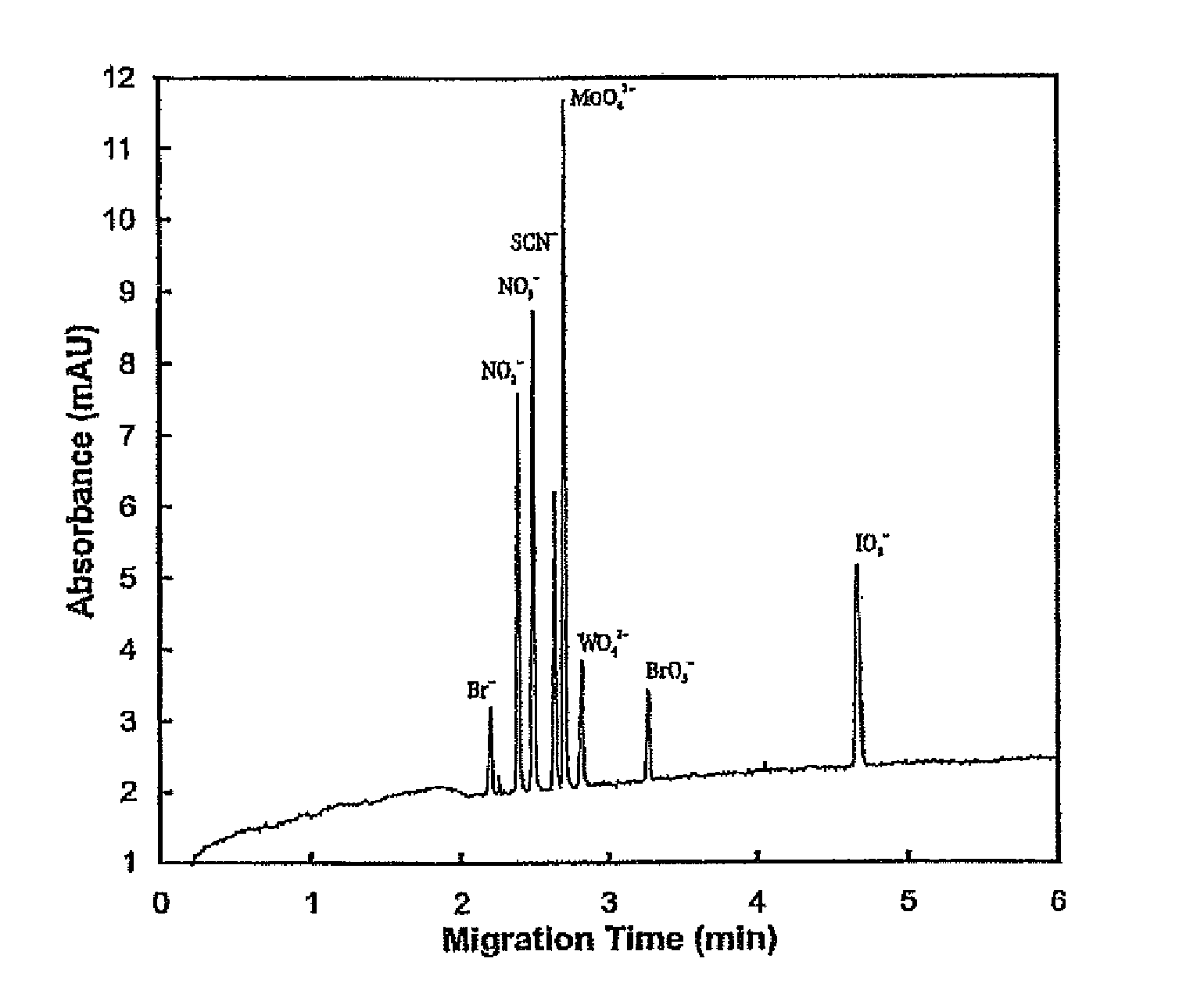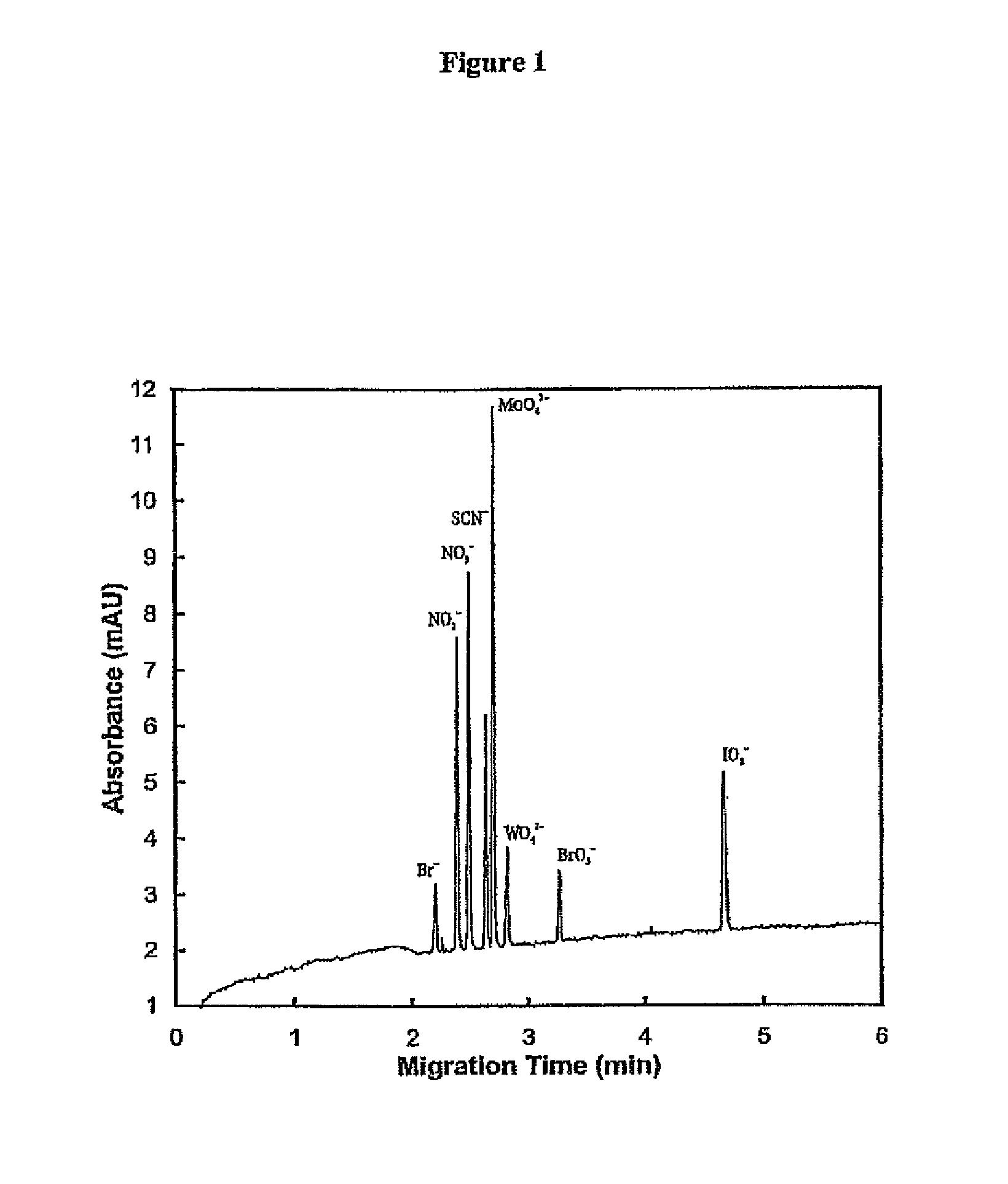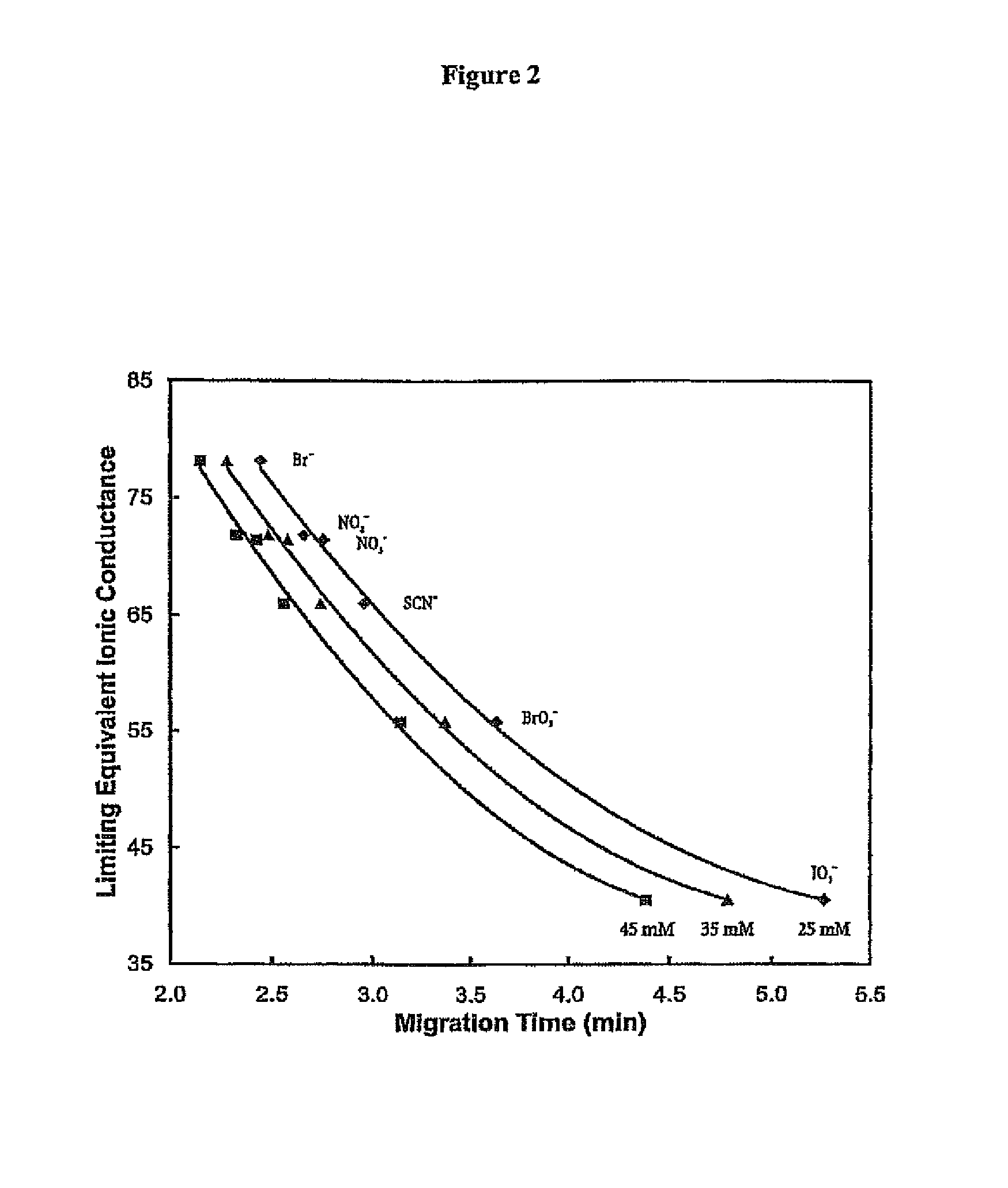Open tube suitable for separation purposes comprising covalently bonded zwitterionic betaine groups
a covalent bonding and open tube technology, applied in the field of open tubes, can solve the problems of limited studies involving modified capillaries in ce with zwitterionic functionality, difficult separation of organic anions with native silica capillaries, and add to the complexity of samples that are collected for subsequent use or analysis
- Summary
- Abstract
- Description
- Claims
- Application Information
AI Technical Summary
Problems solved by technology
Method used
Image
Examples
example 1
Synthesis of Capillaries Grafted With Zwitterionic Polymer Layer
[0042]A 130 cm length (for two capillaries) of the UV-transparent fused silica capillary was flushed with (in sequence) 0.1 M sodium hydroxide for 20 min, 0.1 M hydrochloric acid for 20 min, and finally with water for 20 min at room temperature. The inner wall of the capillary was then activated for grafting polymerization by attaching methacrylic anchoring groups. This was accomplished by filling the capillary with a 30% (v / v) solution of MAPTMS in acetone and allowing the reaction to take place for 18 hours at room temperature, with both ends of the tube sealed with pieces of rubber cut from a silicon rubber stopper. This treated capillary was then washed with acetone for 15 minutes followed by washing with water for 15 minutes. All flushing of reagents and washing solutions was accomplished by nitrogen overpressure at 600 kPa.
[0043]A graft polymerization solution containing 8 mg of BME photo-initiator, 400 mg of SPE,...
example 2
EOF Measurements
[0045]EOF measurements were made by hydrodynamic injection of 5 mM benzyl alcohol at 0.5 psi for 4 seconds and energizing the CE system with 25 kV (cathode at outlet). Four replicates were taken for each buffer solution. An untreated capillary was used as “blank” and was preconditioned with 0.1 M NaOH for 5 minutes, with water for 5 minutes, and 3 minutes with 25 mM sodium phosphate buffer, pH 7. This procedure was used only for the native capillary, not for the MAPTMS-activated and SPE-grafted capillaries, since treatment with NaOH could result in hydrolytic cleavage of the covalently-attached modified layers from the silica surface. Prior to the introduction of each new sample or separation buffer, all capillaries were rinsed for 3 minutes with 100 mM stock buffer solution with the same pH as the actual separation buffer, then for 2 minutes with water, and 3 minutes with the separation buffer; all solutions were driven by a “high pressure” set by the instrument (20...
example 3
Separation of Inorganic Anions
[0051]A new modified capillary (50 cm to detector, 57 cm in total) was used for the separation of a mixture containing 1 mM each of bromide, nitrite, nitrate, thiocyanate, molybdate, tungnate, bromate, and iodate ions (as sodium or potassium salts), as well as for their individual solutes (1 mM of each ion). When a new separation buffer or a new type of sample was changed, the capillary was rinsed by the same rinse procedure as above. Two minutes pre-rinsing was also done with the separation buffer before each separation. The mixtures of anions were injected using low pressure-driven hydrodynamic injection at 0.5 psi for 4.0 seconds. The applied potential was −25 kV (anode at outlet) and a detector rise time of 1.0 second was used. The number of theoretical plates determined the separation efficiency, according to:
N=5.54(tm / w1 / 2)2 [2]
[0052]Where N is the number of theoretical plates for the capillary, tm represents the migration time of a neutral marke...
PUM
| Property | Measurement | Unit |
|---|---|---|
| Capillary wave | aaaaa | aaaaa |
| Structure | aaaaa | aaaaa |
| Transparency | aaaaa | aaaaa |
Abstract
Description
Claims
Application Information
 Login to View More
Login to View More - R&D
- Intellectual Property
- Life Sciences
- Materials
- Tech Scout
- Unparalleled Data Quality
- Higher Quality Content
- 60% Fewer Hallucinations
Browse by: Latest US Patents, China's latest patents, Technical Efficacy Thesaurus, Application Domain, Technology Topic, Popular Technical Reports.
© 2025 PatSnap. All rights reserved.Legal|Privacy policy|Modern Slavery Act Transparency Statement|Sitemap|About US| Contact US: help@patsnap.com



